Interview: The Volyn Regional Council Remains the Owner
In 2016, the Volyn Regional Council established the municipal enterprise Volynpryrodresurs to extract amber, copper, and peat and to generate revenue for the Volyn community. It was only in 2020 that the enterprise was able to begin amber mining.
Since then, amber has literally been sold from time to time in the session hall. A little less often, showcase exhibitions are organized for distinguished guests. One of the favorite attractions for VIP visitors to the council nowadays is to stroll among the pedestals of bright gemstones, hold them in their hands, and marvel at the boldness of the Volyn deputies who dared to make such a decision.
At 9 Kyivskyi Maidan in Lutsk, they proudly say that this is the only municipal enterprise of its kind in Ukraine today. Heads of regional councils from other regions, who also want to profit from mineral resources, now turn to the local deputies for their experience.
However, from the moment Volynpryrodresurs was created until amber began to be sold, some time had passed. During that period, the value of amber declined. The enterprise did not become a savior for the region, as year after year the budget situation worsens and today is noticeably smaller than, for example, that of the single Lutsk territorial community.
We asked Anatolii Kapustiuk for an interview immediately after, at the previous session, one of the deputies demonstratively left the hall, demanding a report from Volynpryrodresurs. During the conversation, we learned that at the next session (today’s one – ed.), the regional council would consider a draft resolution to transform Volynpryrodresurs from a municipal enterprise into a joint-stock company.
This raises a number of logical questions. What is the rationale behind such changes? How much does the amber enterprise earn for community budgets? When will the director report? What was the outcome of the case concerning the NACP directive? We asked all this to the director of the enterprise, Anatolii Kapustiuk.
History. Volynpryrodresurs was created in 2016. In 2017, its head became regional council deputy Vasyl Stolyar. In September 2020, he was dismissed due to “unsatisfactory work.” In February 2021, Anatolii Kapustiuk (previously deputy director of this same municipal enterprise) was appointed director.
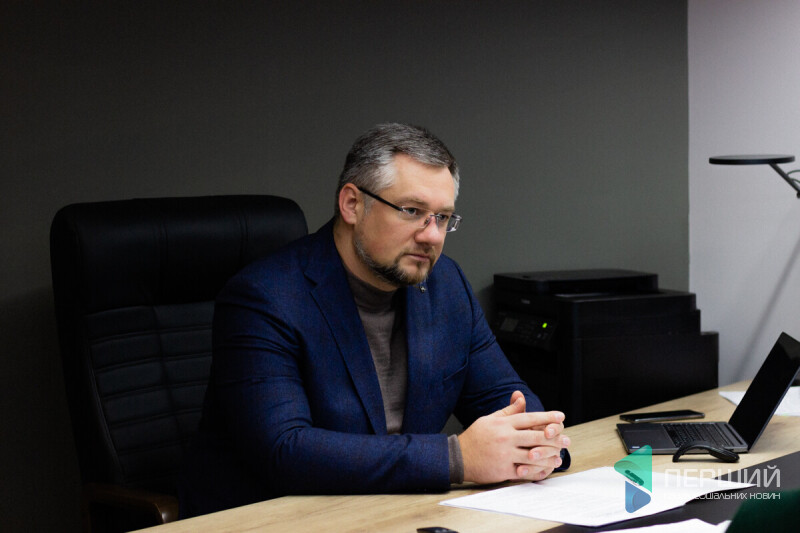
“Provided that the territories are available”
– At the previous session of the Volyn Regional Council, deputy Ivan Smityukh (Agrarian Party) proposed to include in the council’s work plan for the first half of the year a report on the activities of Volynpryrodresurs. When the proposal was not supported during voting, he left the hall in protest. Were you present in the hall at that moment? How did you perceive it?
– I watched all this via live broadcast from my office, because by that time I had already left the session hall. First of all, I was very surprised why this issue suddenly arose. My second surprise was why the proposal for a report from the municipal enterprise was not supported.
Like every head of a municipal enterprise, I am obliged to report on the year’s work. I was appointed to the position on February 11. So, during the February session, the report will be presented. If I were to do it now, it would only cover three quarters. The fourth quarter’s figures, together with the annual totals, are submitted and recorded by February 25. Earlier data are, in one way or another, conditional figures.
Why was our enterprise singled out in this way? Apparently, because it is widely discussed. It is not difficult for me to report on the work. And Smityukh, as a deputy, knows that the municipal enterprise quarterly submits written reports to the relevant commission and the head of the regional council on financial and economic activity. Data on extraction volumes, sales, salaries, taxes, PIT—all this, both for amber and for peat, we submit quarterly. These paper reports are stored, they can be reviewed, they are not secret. One may also attend commission meetings, where I also report regularly.
Ivan Smityukh expressed such a desire—there is nothing wrong in principle. Perhaps it was not supported because, firstly, my report is already included in this plan, and secondly, they did not want to single out one enterprise among 109. That, ultimately, is what was explained in the hall at the time. Had it been approved, there would have been no demarches.
– For more than a year now, amber has been extracted by the municipal enterprise. And everyone in the council says this is a successful experience, and so on. But Volynpryrodresurs has not become such a savior for the regional budget as was hoped. Or at least as was promised earlier. What sums are we talking about? How much, and to which budgets, do you pay?
– Volynpryrodresurs has four licenses for amber, four for peat, and one for copper. We are not conducting any activity regarding copper. As for peat, this year we are working on the “Velyke Bahno” site, and preparing “Koza Berezyna” and “Velyke Boloto” for launch – these are within the Soshychnenska, Manevychi, and Povorska communities. We began extraction in September of last year.
As of December 22, we had extracted 6 tonnes 635 kilograms of amber and sold 6 tons 568 kilograms. This amounted to 97,053,607 UAH.
During the same period, we extracted 52,000 tonnes of peat, selling it for 20,160,000 UAH. That is the result of the enterprise’s activity.

Speaking of amber, for five months of this year the enterprise was idle and carried out no extraction.
– And why?
– This was connected with the approval for clearing territories of deadwood. The subsoil, under special agreements, belongs to the municipal enterprise, but the permanent land users are the forestry enterprises. They must go through their own procedure to release plots. Unfortunately, this takes time.
We calculated that, on average, when we are working, we extract from 500 kilograms to 1 ton of amber, which means that each month of downtime is about minus 16 million UAH.
Look: we have 97 million and 6 tons over 9 months. Whereas, for example, the state-owned enterprise Burshtyn Ukrainy, which is now nearing the final stage of privatization through the State Property Fund, officially extracted 13 tons of amber over 15 years. That’s a clear indicator of our performance.
Let’s not forget that now we have several sites in operation. The enterprise is capable of working 5–10 quarries simultaneously. Accordingly, we can scale up, provided that the territories are available.
However, the territories must be productive. For example, the Manevychi community granted us 337 hectares for exploration work this year. We surveyed those areas – no amber was found there, although it was within the license boundaries. Everyone assumes that in Volyn amber lies in a continuous layer. But that is not the case.
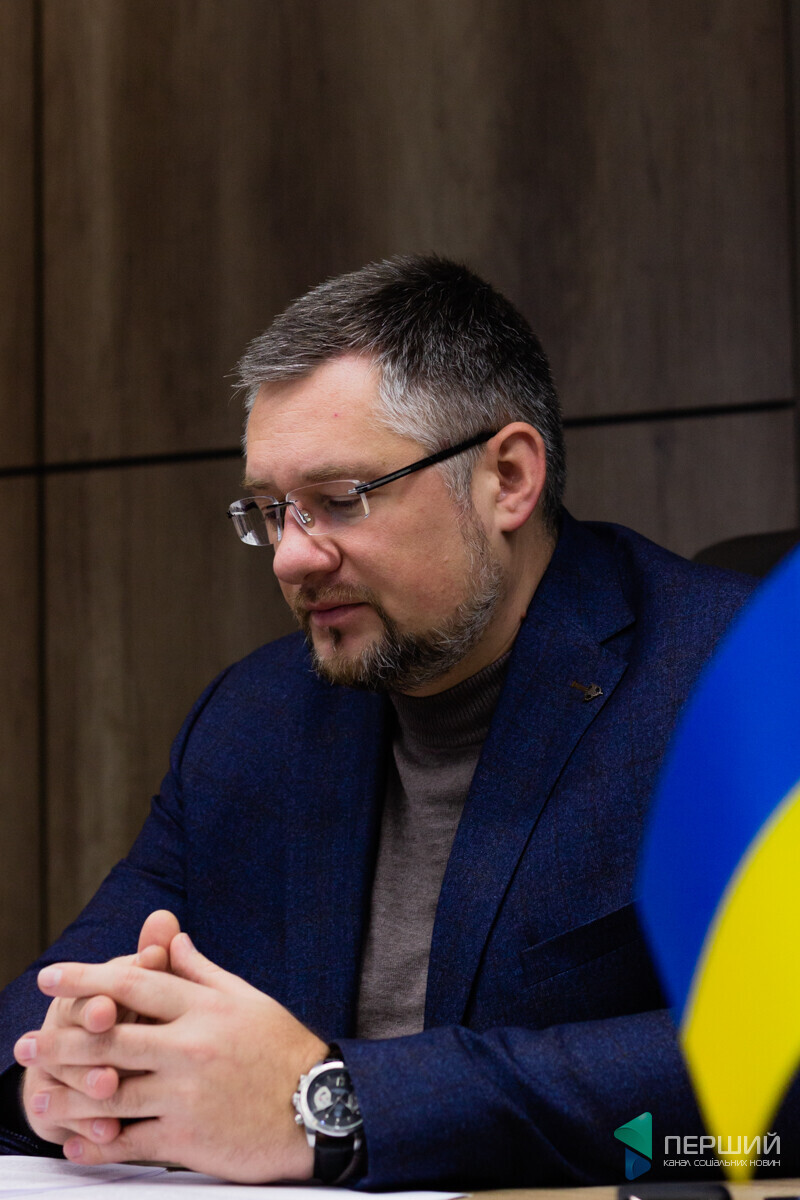
– This raises very simple, but understandable, questions. When communities were being persuaded to allocate land to the enterprise for geological exploration, they were told about benefits, about money for the budget. Now, they say: sorry, no amber. “Or maybe it was extracted illegally during that time, and now they just shrug their shoulders?” people ask. What would you respond?
– It’s a little different. Our licensed areas cover 52,000 hectares. For example, right now we are working in the Manevychi community on lands designated for forestry (Manevychi Forestry, Vovchytske Forestry). And there are lands for agricultural use. The first ones we coordinate with the forestry users (and now with the administration). We tried to work on agricultural lands, but unfortunately reserves were not confirmed there. However, even from our work on forestry lands, rent payments are made to the community budget.
During this period, Manevychi community received 4,302,000 UAH in rent. That is the amount they received, regardless of whether we work in forest areas or agricultural lands. But one must understand the concept of distribution: 30% went to the community, 70% was taken by the state budget. Thus, the community received 1,290,693 UAH.
At the same time, the community receives personal income tax (PIT). Our workforce consists exclusively of local residents – from Manevychi, Prylisne, Lisove, Vovchytsk. There are quite a lot of them. Salaries are also high. Therefore, the PIT amount during this period reached 6,703,391 UAH. That is a very large sum. Just in Manevychi community, PIT totaled 2,831,881 UAH. In Prylisne – 3,638,395 UAH. In addition, the Unified Social Contribution (USC) and military levy also remain in the community.
Currently, in Prylisne community, where we are not working but where Nadrovydobuvannia LLC is registered, PIT of about 120–150,000 UAH per month is directed. In Manevychi community, where the Manevychi branch of Nadrovydobuvannia LLC is registered (this was the community’s condition – to work on their territory and provide jobs for their locals), PIT amounts to 400–450,000 UAH per month. If you calculate this together with rent, overall the community receives up to 1 million UAH per month. I think that’s not bad. I hope that soon we will become the main taxpayer there.
If you calculate salaries, then people have brought 33,178,534 UAH into their families. That is very good.
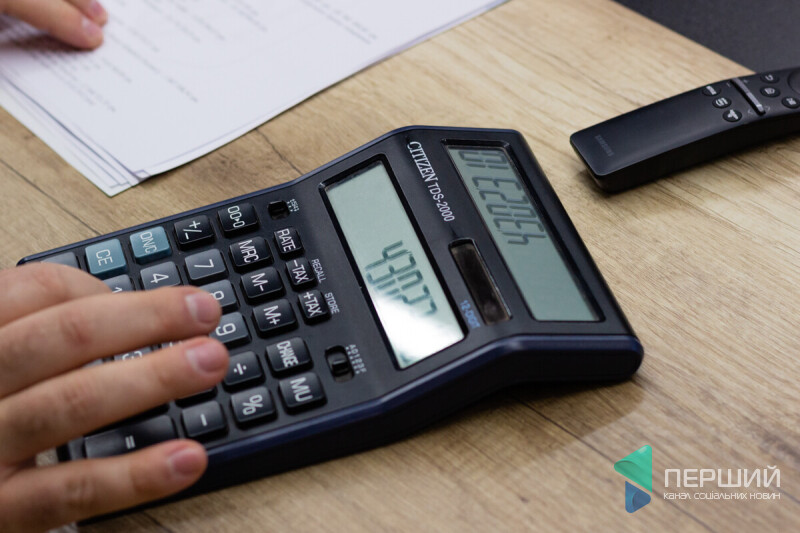
“Copper is much more interesting”
– Last autumn, on one of the broadcasts of 1+1, Ihor Palytsia, explaining the advantages of creating the municipal enterprise Volynpryrodresurs, said: “Money will go into the regional budget. If now the Volyn regional budget manages 200 million UAH of the development budget per year, then we expect from the civilized extraction of amber up to 1 billion UAH per year. And that means schools, kindergartens, hospitals, roads.” That is why questions arise: where are the billions?
– If we are talking about billions, it was not meant only amber. I said that we also have a copper deposit with reserves. The problem with this deposit is that it requires underground mining – that is, a mine must be built. And that requires a huge amount of investment. We have all the project documentation. It has been approved. The implementation cost of this project amounts to up to 450 million USD.
That is an amount the municipal enterprise cannot possibly handle on its own. We need to attract investors, foreign companies. When we received the special permit, we counted on cooperation with the company Polmiedź. Negotiations began. Three boreholes were drilled, international analyses were made. However, the economic downturn due to COVID stopped investments and the start of new projects around the world.
Now we are negotiating on this issue with Canada. By the way, the Ministry of Strategic Industries has agreed to help us with this. On January 10, representatives of the ministry are going to Canada, and one of the issues will be our copper deposit and attracting investment into it.
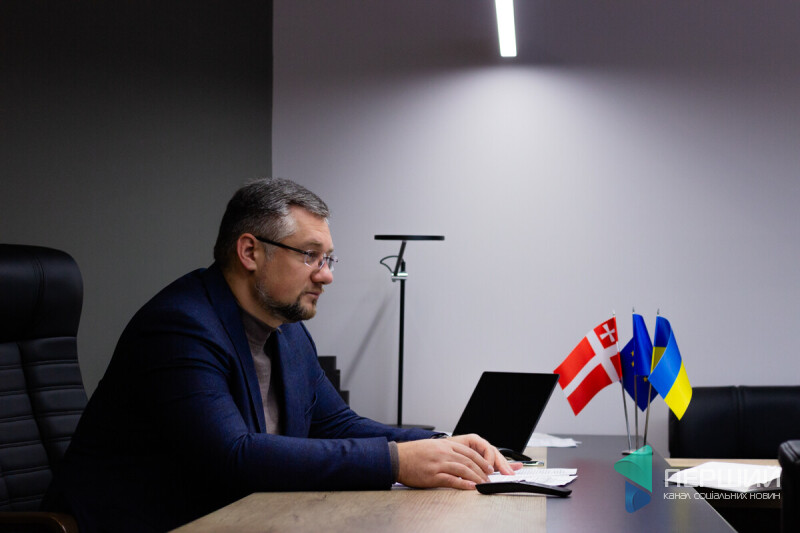
– Which is more profitable to extract today: amber or copper?
– Let’s put it this way: copper is much more interesting, because the price of copper on the international market has risen significantly. But to launch it requires colossal money. Even if the entire regional budget were put into it, it would not be enough. Here’s an example: Novovolynsk and mine No. 10, which still cannot be completed. There the depth is a bit greater – 1000 meters. In Zhyrychi it is a bit shallower – 450 meters. But we know how long mine No. 10 has been under construction. Twenty years already? And simply astronomical sums of money have been buried there.
We understand in this case that we cannot handle the project on our own. We will involve investors to build the mine, set up ore processing, and enter international markets. This is very promising.
With amber, we have already entered the international arena. We are known in China, the United Arab Emirates, Poland, Lithuania. We can easily scale up. Right now, one quarry in 9 months (rounding) gave almost 100 million UAH. And what if there are 10 of them?
In total, we raised those 100 million from… 8 hectares. And we have 52,000 hectares. Can we reach 500 million? We can. A billion? Yes. Only from amber? Yes. This directly depends on territory and cooperation with communities.
– By the way, what is your relationship with the communities now? Do you have understanding?
– This year has shown exactly how we work: there are no ecological consequences, water does not disappear, there are jobs, salaries are honest and transparent, no “envelope” payments – the full amount is paid to the bank card. Extraction volumes are transparent. There is no concept of official and unofficial extraction. If state enterprises report 18 kilograms per year, then in just three months of operation last year we had more than 2 tons. And now already 6,600; by the end of the year, I think it will be 7.
I have no doubt that we will be able to increase extraction and fill the budgets according to the plans that were announced. Even without copper. Everything here depends on cooperation with foresters (on the possibility of releasing territories) and with communities.
There are the boundaries of licensed areas, we conduct exploration, and it shows that sometimes there is no clay at all in which amber is found. Or we survey with ground-penetrating radar, do test excavations with an excavator – there is clay, but no amber in it. As it was in Manevychi community. Now in this community we are considering another 540 hectares. We are also communicating with Kamin-Kashyrsk communities, and it is pleasing that they approach us themselves…
Let me explain to you what a test-pit exploration is. An excavator arrives and digs a pit one meter by one meter, six meters deep. First the pit, then photo documentation of the cross-section, then the territory is studied with ground-penetrating radar. And such pits are made in a “checkerboard” pattern: 20 by 20, 20 by 25. This shows whether the layer is continuous, without drops, whether clay is present or absent. Then it becomes clear whether there are signs of amber or not.
And when we did this in the Manevychi community, it looked like this: we arrive, people come out and say: “Can we take a look?” And every time, wherever we went, they asked us if we would dig in their vegetable gardens. We replied no, because there are sanitary boundaries, etc. Yes, in some areas there are unregistered gardens, but we are not going to enter people’s fields. We do not cross those boundaries.
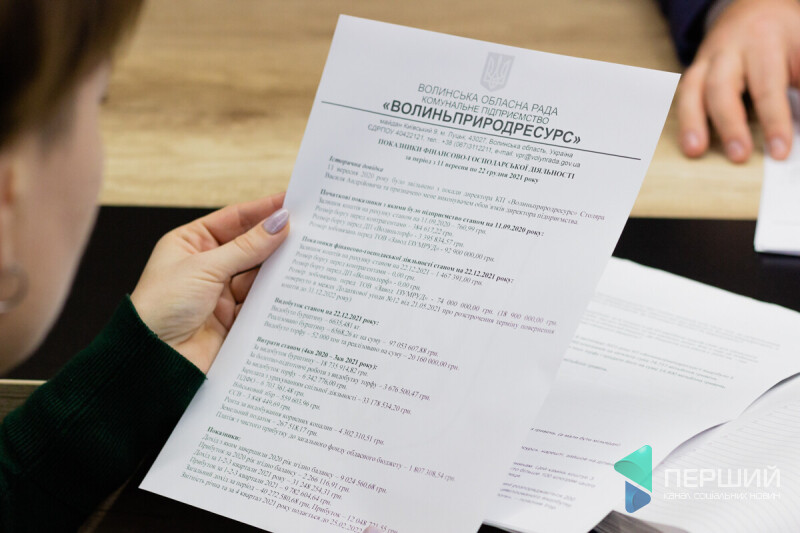
They even asked us whether we could do the work in the fall, so that they could harvest their crops first. And we agreed. We literally waited until autumn. We came with geologists, and every time people would stand, watch, and even spread their arms: “Well, there’s nothing here either. Maybe over there…”
I really hoped that this exploration would give us one or two new quarries. The figures were not bad: 8 hectares – 7 tons. But at the same time, on forest lands (not only agricultural, by the way), over 70 hectares of exploration – zero. This is right next to the areas where we are working.
The peculiarity of amber is that whether it is there or not can only be known after making a cut with an excavator.
“When I was appointed acting director, there were 760 hryvnias in the account”
– In an interview with Pershyi [“The First” media outlet], the director of the state-owned enterprise “Volyntorf” and regional council deputy Ivan Kyrychyk said that his company now operates 80% on the lands of “Volynpryrodresurs.” For a long time, Volyntorf could not obtain new areas for development, but you did. How did that happen?
– “Volyntorf” never applied for licenses for the deposits “Velyke Bahno,” “Velyke Boloto,” “Stobykhivske,” and “Koza Berezyna.” They have their own license for the “Vutyshno” deposit, which they developed. The issue arose with expanding the boundaries of their special permit, the difficulty being that they were moving onto forest lands. To work there, they would have to convert them into so-called industrial lands, which requires two Cabinet of Ministers decisions. That meant they could operate only within existing deposits, but no further.
At that time there were pickets of the administration, workers blocked roads. At that point, Ihor Palytsia saw a way to resolve the problem. A municipal amber mining enterprise had already been established. We gathered information about all peat deposits in Volyn, chose the most productive ones and those accessible by transport to the Manevychi peat briquette plant and the Soyne plant. Peat is a social product in Volyn: without briquettes, the region cannot function fully, especially the social sector, so the decision was made to take these territories and acquire these special permits.
As soon as we got them, we immediately signed agreements with “Volyntorf.”
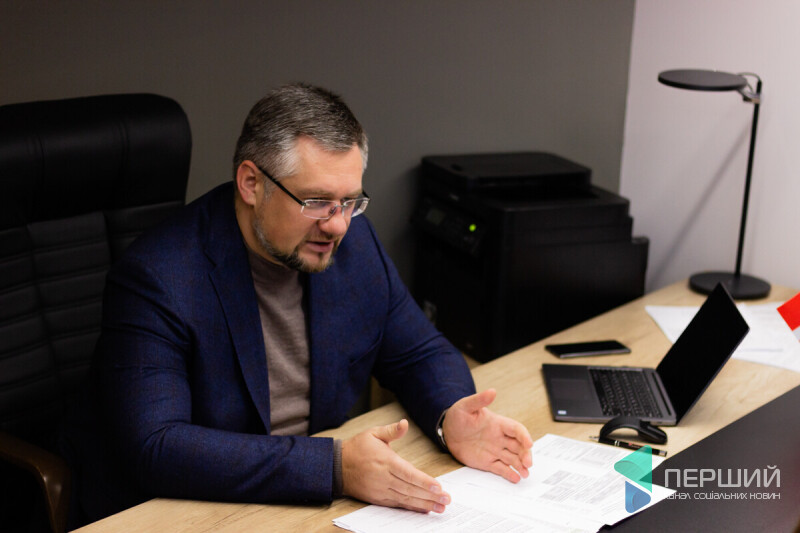
Everyone says: “Well, Volyntorf extracts on your territories and also buys milled peat from you.” Yes, they do. But people only see the top of the structure. We purchased the licenses, we obtained the permits, we developed project documentation for mining, we pay Volyntorf for bog-preparation work on each territory, separately for extraction, and only after that do they buy from us.
During this period we extracted 52,000 tonnes of peat, selling for 20,160,000 hryvnias. For peat extraction, we paid Volyntorf 6,342,776 hryvnias out of this amount. From this same amount we also paid for bog-preparation work (3,676,500) and the cost of special permits (“Velyke Boloto” – 1,694,000; “Stobykhivske” – 901,000, etc.). “Volynpryrodresurs” does not make money on briquettes, because we sell only milled peat to this state enterprise, from which they then produce the briquettes.
As of September 11 last year, the debt to Volyntorf reached 3,395,000: they had already started bog-preparation work, while the enterprise had not settled with them and was accumulating debts. Today we have zero debts to contractors, and zero debts to Volyntorf. All our payments and financial obligations are closed.
When I was appointed acting director, the company had 760 hryvnias and 99 kopecks in the account (as of September 11, 2020). Today, despite having no debts, we have 1,467,491 hryvnias. The year is not even over yet, and we have funds constantly available.
– What was the outcome of the legal case with Vasyl Stolyar (the former director and former deputy of the Volyn Regional Council, who sued over his dismissal – author’s note)?
– The appeal court ruled his dismissal lawful. He filed a cassation. On November 24 of this year, the Supreme Court of Ukraine upheld the appeal ruling and put a final end to this story.
– It is known that the plant where amber is processed, located in Prylisne, belongs to you, correct?
– Yes.
– Why is that so, why is it not a municipal enterprise, why doesn’t Volynpryrodresurs run it?
– The municipal enterprise has no property of its own. If we are talking about the plant in Prylisne, I bought it back when Volynpryrodresurs did not yet exist.
As a private individual, I purchased the property, had plans to engage in this field, and a private company was created to obtain special permits (“Amber-Invest”). But the position of the Regional Council, already at the time Volynpryrodresurs was being created, was that all subsoil resources must serve the region.
I was offered to work for the benefit of Volyn. At that time, the plant (formerly a canning shop) had already been purchased, and work was being carried out there. When in April 2018 a general contract was signed with LLC “Nadravydobuvannia,” which was registered in Vinnytsia, the condition was that all taxes remain in our region, so they suggested considering re-registration. In 2020, they re-registered in Volyn at the address of the plant and have been working since then.
After he was dismissed, Vasyl Andriyovych made great efforts and filed applications with the NACP, NABU, and the prosecutor’s office. The question was considered whether there was a conflict of interest in the fact that the general contractor was renting premises from me. But all proceedings were closed. The relevant authorities found no conflict of interest.
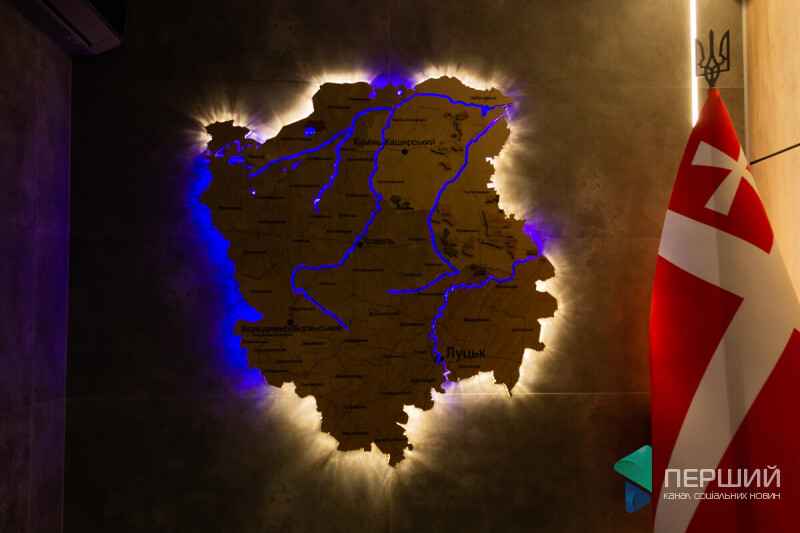
– When you were appointed director of the enterprise on February 11, some deputies asked in the session hall whether there might be problems with the fact that you are the founder of several companies and at the same time would be receiving a salary at Volynpryrodresurs. You replied that there would not be. Nevertheless, you remain the founder of three companies: LLC “FSB-Security,” LLC “Law Firm Pravda,” and LLC “Amber-Invest.” Recently, it became known that the NACP sent a directive to the Volyn Regional Council, stating that as the director of a municipal enterprise you should have transferred your companies and corporate rights to another person for management. In other words, you are violating the Law “On Prevention of Corruption.” How do you explain this?
– The appearance of this directive can be directly attributed to Vasyl Stolyar, who filed a written complaint seeking to hold me accountable for this. It was precisely on the basis of his statement that the NACP contacted the municipal enterprise, requesting explanations that would either confirm or refute his claim.
What is the essence of the matter? At the time when I was his deputy, I allegedly did not submit declarations, thereby violating anti-corruption legislation. And, supposedly, at the time of my appointment as director, I was still listed as the owner of companies. These two points formed the basis of his complaint.
That I did not submit declarations is untrue. Open the registry – all are submitted. Regarding the alleged failure to submit the 2017 declaration, responsibility and the obligation to monitor whether declarations are submitted lies with the director of the enterprise. If Vasyl Andriyovych believed that I, as his deputy, had to do this, then within a week he was obliged to notify the relevant authorities. Moreover, even the statute of limitations for liability for this has already expired.
The next issue that was checked: individuals appointed to managerial positions at public or municipal enterprises, according to the law, are prohibited from receiving profit in other places. One can be a founder, but cannot be a director of companies. A response was given to the NACP that since 2017, when I became deputy director of Volynpryrodresurs, all those companies were suspended, the firms file “zero” reports. They do not conduct activities, I receive no profit or income from them. Appointing a hired manager there would mean paying about 10,000 monthly to that company, and then they would no longer file “zero” reports. That’s all.
In addition, the NACP itself has clarifications as to what constitutes public enterprises and private enterprises. Local self-government bodies can establish both. By the criteria, our municipal enterprise is not public, because it does not perform a social function, it is engaged exclusively in economic activity, and is not funded from the budget. When it was created in 2016, 3 million were allocated from the regional budget for the initial acquisition of geological information, and that same year every last kopeck was returned to the budget.
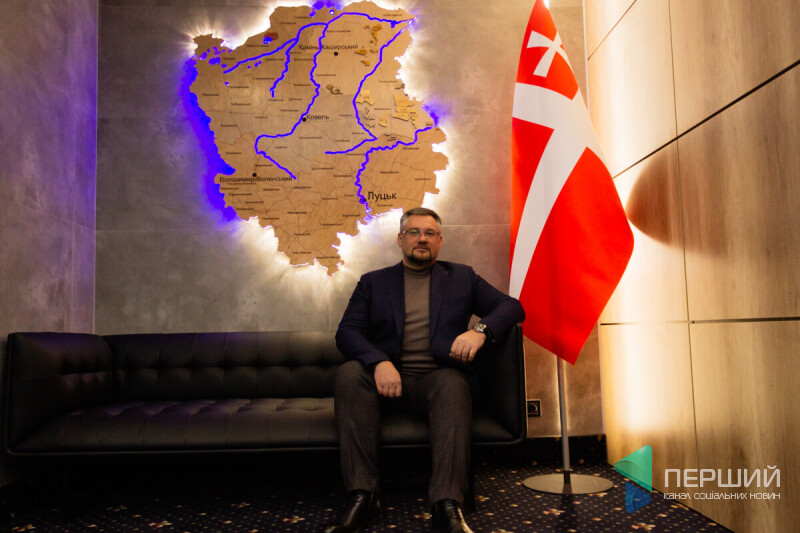
– And those were the only funds from the regional budget that were ever involved?
– Yes. In 2017 even the treasury accounts were closed, and we have not received a single budgetary kopeck since then. We are not a budget-funded institution; on the contrary – we transfer money into the budget. Therefore, we do not fall under the definition of a public company and are not required to submit declarations. I submit them because I choose to do so, because the banking sector now demands this transparency. All this information has always been included in the declarations, and it is evident there that I receive no income from those companies.
This was verified by the regional council’s commission. The commission agreed that we are not a public enterprise. And even if the NACP did not like the decision of the commission, the statute of limitations for holding me liable has already expired. These decisions were sent to the NACP.
– Have you received any response from the NACP?
– No, not yet.
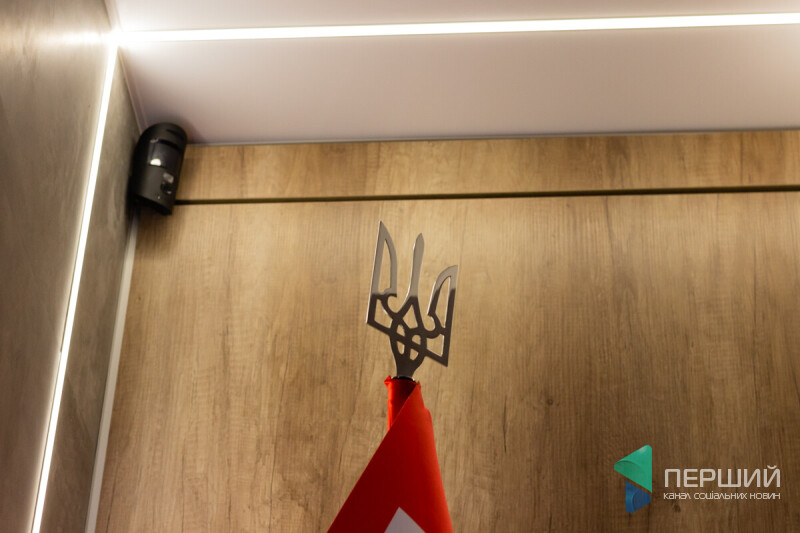
“The owner does not change”
– On December 8, the property commission considered a draft resolution on the reorganization of the Municipal Enterprise “Volynpryrodresurs” and its transformation into a joint-stock company. The members of the commission supported this decision. It will obviously be put to the vote at the nearest session. What prompted its appearance? Why is it needed?
– As a municipal enterprise, we are limited in resources when it comes to attracting funds. This is what we were talking about when we mentioned Zhyrychi. In this case, it is a matter of transforming a municipal enterprise into a joint-stock company. What does this mean?
For example, “Ukrgazvydobuvannia” was a state enterprise, it became a joint-stock company. “Energoatom” was a state enterprise, it became a joint-stock company. “Ukrzaliznytsia” – the same. That is, this is simply one of the forms of governance, which is in no way different from a municipal enterprise. If you open information about any of these companies, you will see that they are 100% state-owned. The ownership status does not change. But joint-stock companies have the right to issue securities, issue bonds, and raise funds against their charter capital and reserves.
Joint-stock companies are the most complex and the most heavily regulated form of governance. Not only must the company disclose all reporting to its founder – which we already do regularly – but it is also obliged to provide monthly, quarterly, and annual reports to the state regulator, which is the National Securities and Stock Market Commission. It is a very complex structure, but it is chosen by large enterprises that want to use precisely the investment mechanism.
– So, the regional council will remain the 100% owner? Or could a private entity also become an owner of the enterprise?
– This depends on the form of creation. If you look at the draft resolution, it says: “To reorganize the municipal enterprise of the Volyn Regional Council by transforming it into a joint-stock company ‘Volynpryrodresurs’ in the form of a private joint-stock company.”
When our deputies read “private,” they perceive it as if something is wrong here. But there is a law on joint-stock companies: “private” is what used to be called a closed joint-stock company. A public joint-stock company is when anyone can buy a share of the stock. A private one is when one hundred shares are issued, and all of them belong to a single owner. There is no question of issuing shares here. A decision of the founder is required, that is, a decision of the regional council.
That is, the first step is the transformation stage through reorganization into a joint-stock company, which is a very lengthy process. Only then comes the issuance of bonds (solely by the owner's decision, which requires a separate session), entering the stock market, and subsequently, the procedure for reissuing all project documentation... This is very complex, but it will enable the use of an investment tool to implement the copper mining project.
We’re not saying that an investor is already waiting around the corner, ready to rush in and invest. No, but we want to have this mechanism in place, so we’re creating it.
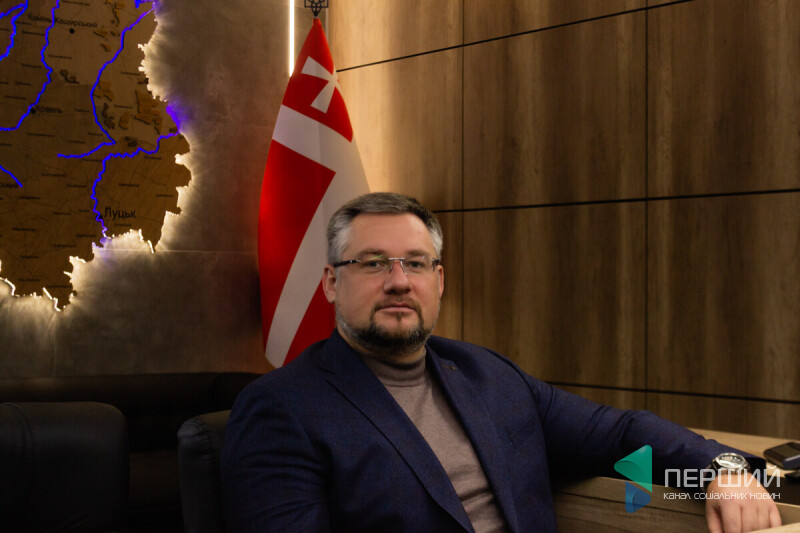
– Why, knowing that a joint-stock company has greater opportunities, didn’t the council initially pursue this path?
– It’s hard for me to say. Typically, regional councils create communal enterprises. It’s a simpler form of management.
We shouldn’t forget the purpose behind this. Zhyrychi is that special permit we’re currently not utilizing. If we don’t start this project next year, we could lose it. There are simply no other mechanisms to initiate this process.
The status doesn’t change. The owner doesn’t change. I believe all the deputies have familiarized themselves with the specifics of private and public companies. For the regional council, this changes nothing. For the communal enterprise, it means more complex reporting and more oversight bodies, but at least it provides an option to attract funds for projects. Because the funds we have determine how we can scale.
– Why wasn’t this decision brought up for discussion earlier?
– In fact, this issue was discussed with the deputies. Everyone saw that even state-owned enterprises are already joint-stock companies, and there’s nothing unusual about it—they understood the situation.
If any questions arose, they’ve all been clarified by now. And in general, I’m ready to report at any time.
– What do you consider the result of your work, since we’re talking about reports and outcomes again?
– The best result is that the enterprise has been launched and has no debts. We’re alive, we’re moving forward, creating jobs, and contributing to budgets at all levels.
Well, we’ve reached millions, hundreds of millions. People ask, “Where are the billions?” We’re ready to aim for billions, but it’s impossible without cooperation with government bodies, the administration, the forest agency, foresters, and communities.
The communities have already realized the benefits from Volynpryrodresurs. Everyone knows we had strained relations with the Prylisne territorial community. Just today, for the first time, they took the initiative to start a conversation, ready to sit down, engage in dialogue, and cooperate. They understood that if they don’t approve the allocation of the deposit to us, the “Soyne” plant will stop. And the operation of the plant determines the heating of homes in the village. There’s no alternative.
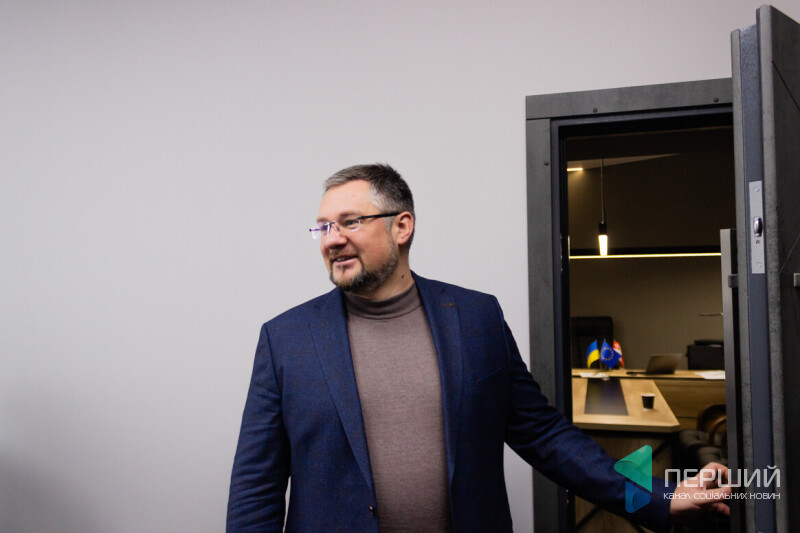
SOURCE: Перший Канал Соціальних Новин
